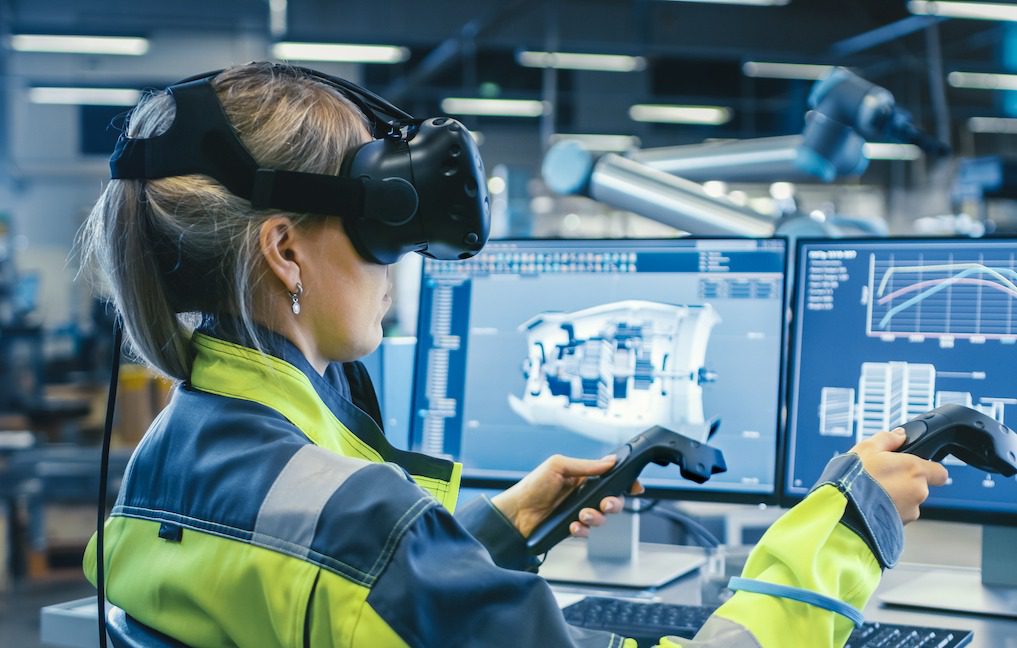Finding ways to help humans work alongside new automation is arguably the hottest area of the accelerated mechanization of American factories, and few people know more about how to do it than Paul Baldassari.
The executive vice president of worldwide operations for Flex, which designs and manufactures a huge variety of products for hundreds of clients, oversees hundreds of plants in 30 countries with more than 160,000 employees. Headquartered in Singapore with a U.S. base in San Jose, California, Flex specializes in “original design manufacturing” of devices and systems for aerospace, defense, consumer electronics, housing, energy, industrial and communication industries.
Flex’s ubiquity across markets and industries gives Baldassari exposure to literally thousands of potential use cases where combining human workers and intelligent machines boosts productivity and safety, cuts costs and enhances customization of its clients’ products.

He calls it “autonomation,” and Baldassari—who has risen through Flex over a 22-year career there, including stints as CHRO and executive vice president of strategic programs and asset management—had some advice for manufacturing leaders on how to deploy it.
“Not all of our lines are 100 percent automated,” Baldassari told StrategicCFO360. “Sometimes we support them with autonomation so we can focus on where people are most effective.”
Autonomation is “basically machine-supported work by people,” he says. Flex likes to automate assembly lines a little bit at a time by introducing automation to a step where part of the work is still manual “instead of automating everything at once. We start automating specific workplaces and over time reduce the number of people required to be on the manufacturing line. In the end, it’ll be a fully automated manufacturing line run by technicians and engineers who continue to calibrate and set up equipment.”
For example, frequently, Flex factories don’t automate operations involving cable in electronics assemblies because “it’s difficult to automate anything that’s flexible like cable,” Baldassari said. Steps before and after cable assembly, such as testing to see whether they’re connected, can be automated, but in these cases human operators remain tasked with actually connecting the cables.
Flex also makes great use of “cobots,” which are robots that work with people, also known as collaborative robots. “They don’t need to be in [safety] cages,” Baldassari said. “Cobots are flexible and can take over lots of repetitive tasks to let people focus on what’s best done by humans and what’s best done with flexibility.”
Baldassari suggested three considerations for manufacturing chiefs who are attempting to integrate automation steps with human labor:
• Value human operation. “Not everything needs to be a lights-out factory,” Baldassari said. “For one thing, it would be a very boring place. I’ve seen only a few, and they are very rigid and inflexible. You need humans and human innovation and energy to continuously improve. Automate where you can take out repetitious or strenuous or dangerous tasks to improve safety and keep the human mindset on the shop floor, where you need the flexibility and innovation to continuously drive efficiency and support customers.”
• Plan ahead. “I would spend more up-front time on digitization than I’ve seen some of our partners do, especially small and mid-size supply-chain partners,” he said. “It’s absolutely worthwhile to spend 10 percent of your resources up front to digitize and simulate before you put things into practice. Once you have machines and a line layout, it’s difficult to change. So spend time up front to plan and simulate. That will help you a lot, not just in the ramp-up phase but later on.”
• Keep the faith. A substantial part of pushing ahead with digital transformation, Baldassari said, is maintaining a balanced view even of the short term. “There’s a lot of doom and gloom right now from an economic perspective,” he said. “We need to take things in a little bit more relaxed perspective. Even ‘recession’ now actually seems to mean 2 percent growth, and I don’t believe we’ll have 15 percent inflation either. Keeping balance is important for going forward. There’s more stability in the supply chain, for example. If you continue to work with your partners in good times and bad, that allows for more efficiency in the manufacturing process.”








